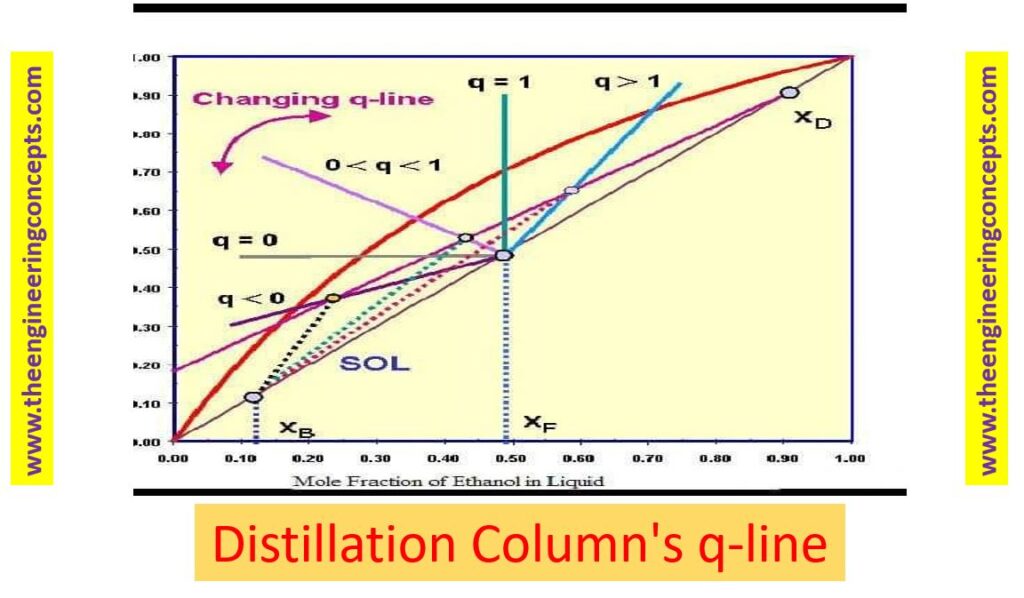The parameter q is the mole fraction of liquid in the feed and the slope of the q-line is q / (q – 1).
If the feed composition is such that it does not coincide with the intersection of the operating lines, this means that the feed is not a saturated liquid. The condition of the feed can be deduced by the slope of the feed line or q-line.
Depending on the state of the feed, the feed lines will have different slopes. For example,
q = 0 (saturated vapour)
q = 1 (saturated liquid)
0 < q < 1 (mix of liquid and vapour)
q > 1 (subcooled liquid)
q < 0 (superheated vapour)
Depending on the state of the feed, the feed lines will have different slopes. For example,
q = 0 (saturated vapour)
q = 1 (saturated liquid)
0 < q < 1 (mix of liquid and vapour)
q > 1 (subcooled liquid)
q < 0 (superheated vapour)
The q-lines for the various feed conditions are shown in the diagram.
These are:
1) feed-line and rectification section operating line
2) feed-line and stripping section operating line
3) stripping and rectification operating lines
This is because these pairs of lines determine the third.
- Content Source:
- https://en.wikipedia.org
Image Source
- Also Read:
- Thermodynamic Cycle
- Fluid Coking
- Types of Control System
- What is Thermowell ? Types of Thermowell
- Factors Affecting The Operation Of Distillation Column
- Pump Selection Criteria Piping and Instrumentation Diagram – P&ID
- How to choose betwwen PLC and DCS systems for process industries ?
- Cement Manufacturing Process
- Vinyl Chloride from Ethylene
- Cooling Tower
- Psychrometric Chart
- What is Boiler ?
- Venturi Flow Meter
- Pitot Tube
- Coriolis Mass Flow Meter
- RECIPROCATING PUMP
- Design of Centrifugal Pump
- Valve & Its Types

